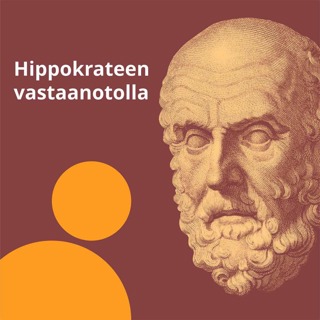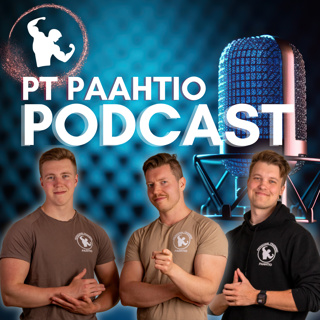
I Get 20 Tick Bites Every Week (Lyme Disease)
In this podcast, I’m going to share my secret to preventing Lyme disease. Lyme disease is usually treated with antibiotics, which kill not only the bad bacteria but also the good bacteria, lowering the immune system. Some people will develop a resistance to antibiotics, which may result in problems such as chronic fatigue syndrome, fibromyalgia, and autoimmune disease after Lyme disease treatment. There are over 900 different species of ticks. Some ticks carry Lyme bacteria, a corkscrew bacteria called a spirochete. These bacteria can penetrate many different tissues and evade your immune system by hiding in tissues without immune cells. A tick bite usually causes redness that could develop into a bull’s eye rash, a common indicator of Lyme disease. Corkscrew bacteria can invade the heart and cause palpitations. They also have a defense mechanism that can keep them alive even after they’ve been engulfed by your immune cells. Spirochetes downgrade your receptors for vitamin D, the most important vitamin of the entire immune system. Vitamin D strengthens your monocytes and makes them more efficient. It also increases antimicrobial peptides that help kill spirochetes. There are 2 main systems of vitamin D. One controls calcium, while the other supports the immune cells, heart, muscles, central nervous system, and intestines. The latter system depends on vitamin D from the sun, your food, and supplements. This vitamin D only lasts for 24 hours in the body. If you suspect you have Lyme disease, you may want to try taking at least 30,000 IU of vitamin D daily, even if you’re taking antibiotics. Anytime you take vitamin D3, you also need adequate magnesium, vitamin K2, and zinc. Japanese knotweed and garlic can also be beneficial for Lyme disease. DATA: https://www.ncbi.nlm.nih.gov/pmc/arti... https://www.ncbi.nlm.nih.gov/pmc/arti...
30 Elo 20249min

#1 Vitamin to Eliminate Swollen Legs and Ankles
Today, we’re going to talk about edema causes and remedies. Swollen legs are often a symptom of edema and are typically blamed on liver, kidney, or heart problems. Did you know that edema and pitting edema can be fixed without a blood thinner or diuretic? Water retention in the lower legs is caused by a problem with the sodium-potassium pumps in your cells. If these pumps aren’t working correctly, water retention outside the cells, known as interstitial fluid retention, will occur. When you have swollen ankles, it’s usually the result of high blood sugar connected to the hemoglobin protein in your blood. This is called glycation, which inhibits the blood cell’s ability to carry nutrition and oxygen throughout the body. Glycated proteins can also block circulation, leading to swollen legs and swollen ankles. High blood sugar causes sodium retention, which also contributes to water retention. Over time, this can affect the nerves in the bottom of the feet, causing numbness and tingling, known as peripheral neuropathy. Even if you don’t yet have diabetes, edema can be caused by high blood sugar. To help eliminate edema, you must ensure you’re getting plenty of potassium, which can be difficult to achieve through diet alone. The average person needs 4700 mg of potassium daily! Avocados, salads, and berries can help you meet this requirement. You also need plenty of magnesium to help eliminate edema. Pumpkin seeds, sunflower seeds, and leafy greens are good sources of magnesium. Aim for 420 mg of magnesium daily. High-quality electrolyte powder without hidden sugars can help increase potassium and magnesium intake. Vitamin B1 deficiency is likely behind issues with the sodium-potassium pump. For sugar to be turned into usable energy in the body, you need vitamin B1. Consuming too many refined carbohydrates can cause a vitamin B1 deficiency. Vitamin B1, potassium, and magnesium can help eliminate edema, but you must also eliminate sugar from your diet.
26 Elo 20247min

The Best STRETCH to Stop Sciatica Pain
Today, I’m going to share a few natural sciatica pain remedies! The sciatic nerve is the longest and largest nerve in the body. It extends from the lower back, down the back of the leg, to the bottom of the foot. Surgery for sciatica can cause side effects like failed back surgery syndrome. Because 90% of sciatica pain will often resolve by itself, invasive procedures are best saved as a last resort. Sciatic pain often gets worse in the winter, which would explain why vitamin D deficiency is a major contributor. If you’re dealing with inflammation, you need high amounts of vitamin D daily. Vitamin D is a potent anti-inflammatory and works similarly to Prednisone without the side effects. It helps to repair the nerves, disc, connective tissue, and muscles involved with sciatica. Magnesium deficiency can also contribute to sciatica because it’s essential for keeping your muscles relaxed. You also need adequate magnesium for vitamin D to work in the body. Vitamin B12 is involved with several aspects of the nervous system and can cause numbness, tingling, and burning pain if you’re deficient. It’s highly anti-inflammatory, and a deficiency can also contribute to sciatica. Most people don't get enough sun, so unless you’re taking 10,000 IU of vitamin D each day, you could end up deficient. If you have sciatica, try upping your dose of vitamin D3 to 20,000 to 30,000 IU daily. Around 800 mg of magnesium each day can be beneficial for sciatica. Sunflower seeds, pumpkin seeds, chocolate, almonds, leafy greens, bone broth, and spinach are good food sources of magnesium. Red meat and other animal products provide plenty of vitamin B12. Try these simple sciatica exercises focused on stretching the fascia to say goodbye to your sciatic nerve pain!
25 Elo 202410min

Fastest Way to Rid Your DOUBLE CHIN (Turkey Neck)
Today, I’m going to show you four easy double chin exercises that can get rid of a turkey neck for good. Because of the typical loose skin, a double chin is often referred to as a turkey neck. If you do these double chin exercises on a regular basis, you will see massive improvement! As we age, we develop loose skin, especially under the neck, which does not get much exercise. There’s a superficial and a deep layer of connective tissue called fascia under the skin on your neck. The muscles and fascia in your neck are responsible for head flexion, chin movement, and jaw movement. The first face exercise works the muscle that pulls the jaw down when you open your mouth. The next exercise, which looks like a frown, activates the superficial fascia. The third exercise creates an elongation and deep stretch of the fascia. The fourth and final exercise allows for head flexion to strengthen and tone the fascia. Remember, If you don't use it, you lose it! Stretching, strengthening, and tightening the fascia with these simple double chin exercises can eliminate a turkey neck!
24 Elo 20244min

4 Common Ingredients That Will Kill You!
In this podcast, we’re going to talk about 4 common ingredients found in 99% of all junk foods that can shorten your life. You won’t understand which foods to avoid until you know the ingredients. Hydroxypropyl distarch phosphate, interesterified soybean oil, hydrolyzed corn oil, maltodextrin, dextrose, and dextrin are chemical names for common junk food ingredients. Companies use these names to cause confusion. It’s important to look beyond nutrition facts and read the ingredients because not all calories are the same. Calories from high fructose corn syrup are not the same as fructose from fruit. Synthetic starches differ from the starch found in vegetables, and there’s a big difference between cane sugar and synthetic sugars like glucose syrup. Check the ingredient list and avoid these foods! 1. Sugar 2. Starches 3. Seed oils 4. Refined proteins Soy protein isolates and A1 beta-casein create inflammation and should be avoided. You’ll also want to avoid wheat gluten. Print out my convenient cutout card to keep in your wallet so you’ll know which foods to avoid on the go!
23 Elo 20245min

These Mistakes Are Super Unhealthy!
Today, we’re going to talk about some of the common mistakes people make with supplements. 1. People often wonder what time of the day they should take their supplements. Taking your supplements in the morning can give you the energy you need for the day. Avoid taking electrolytes before bed and calcium supplements before eating. Some people benefit from vitamin D supplements in the morning, while some benefit from taking them before bed. 2. Avoid swallowing too many supplements at once! 3. Introduce supplements one at a time to learn what works and doesn’t for your particular health problem. 4. Supplements won’t work if you have a poor diet. Make sure to get enough protein and limit your carbs. 5. Cheap vitamins contain cheap ingredients. Many cheap supplements and daily vitamins contain calcium carbonate, the type of calcium found in cement. They also contain fillers and dyes! Synthetic vitamins, except niacin and benfotiamine, often have side effects and should be avoided. 6. Avoid taking supplements and drugs together at the same time for the same problem. 7. Certain vitamins work synergistically with others, so you have to take those particular supplements together. For example, if you’re taking high doses of vitamin D, you must also take adequate magnesium. Similarly, high doses of zinc over time can cause a copper deficiency. 8. Don’t take advice about supplements from people who don’t know the data. 9. Many people don’t take a high enough dosage of their supplements to see results. You often need to take more than the RDA to produce a therapeutic effect. 10. If you’re a vegan, you must take supplements to prevent deficiencies. Vitamin B12, vitamin D3, omega-3s, iron, zinc, iodine, and calcium are all vital for your health. 11. Use the correct dosage of your supplement to see results. Your paracrine/autocrine system needs about 10,000 IU of vitamin D daily!
19 Elo 202411min

I Took Omega-3 Fish Oil for 30 Days. Here's What Happened
Today, we’re going to talk about fish oil benefits and the importance of omega-3 fatty acids. Both cod liver oil and fish oil contain omega-3 fatty acids, with the addition of vitamin A and vitamin D in cod liver oil. Around 25% of the fat in your brain is the omega-3 fatty acid, DHA. Most of this fat is in the frontal cortex, which supports memory, focus, concentration, and attention. DHA supports the integrity of the membranes around the neurons and supports the retina. It also protects against inflammation, UV radiation, and macular degeneration. Omega-3 fatty acids keep skin smooth and protect against acne, psoriasis, eczema, dry skin, red skin, and ultraviolet light. They can also help remineralize bone, decrease the risk of osteoporosis, and improve arthritis and joint inflammation. Taking cod liver oil or fish oil for 30 days has even more potential benefits, including the following: •Supports liver health •Helps regulate blood sugar •Helps reverse insulin resistance •Supports inside of the arteries •Reduces symptoms of asthma and allergies •Supports fertility •Helps eliminate soreness and inflammation after exercise Avoid choosing fish oil based on price alone. Some fish oils are poor quality and may be rancid or oxidized. Know the source of your fish oil to avoid getting a product contaminated with heavy metals such as lead, arsenic, or mercury. Fish oil and cod liver oil may taste like fish, but they shouldn’t have a rancid taste. To minimize the taste, try looking for supplements in pearl form. Omega-3 foods include fatty fish such as wild-caught salmon, herring, mackerel, and sardines. Shellfish and grass-fed dairy products also contain omega-3 fatty acids.
18 Elo 20245min

This Is a DEADLY Combination
Find out why combining sugar and caffeine is not the best choice for chronic fatigue and why it might even make the problem worse. Rockstar energy drinks contain 16 teaspoons of synthetic industrial sugar, which is terrible for your liver. Monster energy drinks contain 14 ½ teaspoons of sugar, and Nos energy drinks have 13 ½ teaspoons. All three of these energy drinks have more sugar than Coca-Cola, paired with 160 mg of caffeine. Gatorade and Powerade also contain more sugar than Coca-Cola. Celsius energy drinks don't contain sugar, but contain sucralose, which causes similar damage in the body. They also contain a whopping 270 mg of caffeine! Sugar combined with caffeine creates a ticking time bomb in the body. If you have low blood sugar, sugar will give you a temporary mental boost in energy, followed by a crash. Symptoms of low blood sugar include irritability, brain fog, weakness, and fatigue, but you wouldn’t have low blood sugar if you didn’t consume sugar in the first place. Real energy in the body comes from the mitochondria in the form of ATP. The food you eat is converted into energy with the help of important cofactors such as B vitamins, CoQ10, magnesium, iron, sulfur, and lipoic acid. Sugar from energy drinks contains no cofactors, so you deplete your nutrient reserves when you consume them. Caffeine doesn’t give you energy—it blocks the chemical compound that makes you sleepy. The problem with energy drinks is that they contain too much caffeine. Too much caffeine increases adrenaline, which increases your heart rate, blood pressure, and cardiovascular stress. Caffeine is a diuretic, so it can cause dehydration. It can also cause adrenal fatigue and sleep problems over time. The better solution is to correct the diet for sustained energy. Proper nutrition, electrolytes, and salt should give you plenty of energy.
17 Elo 202411min





















